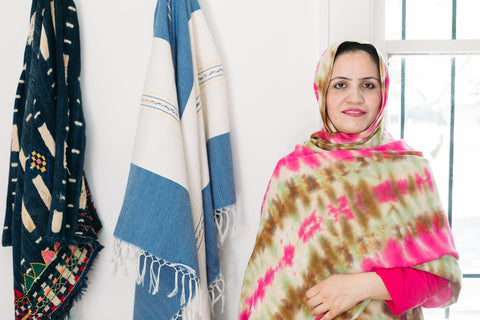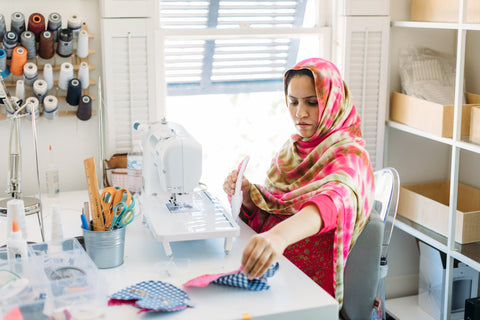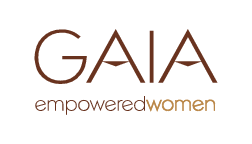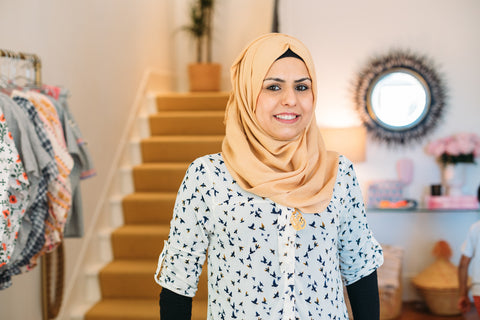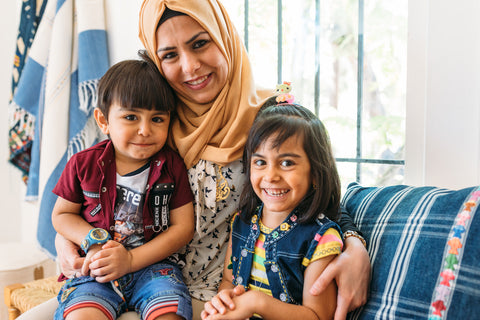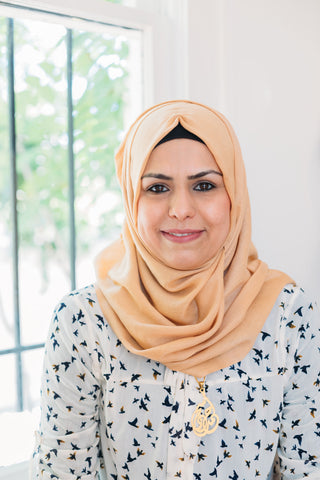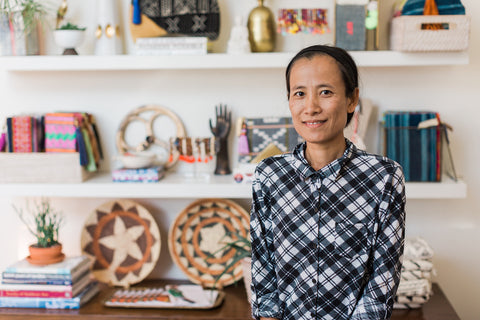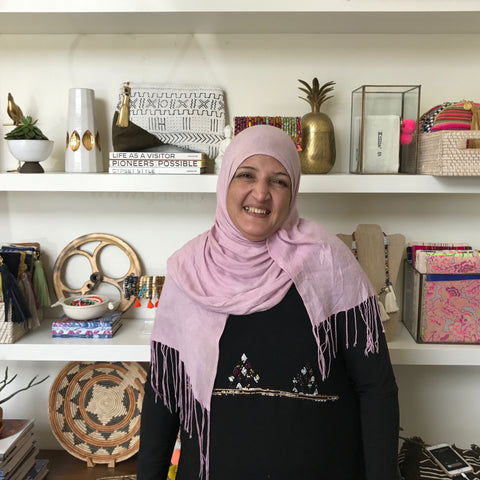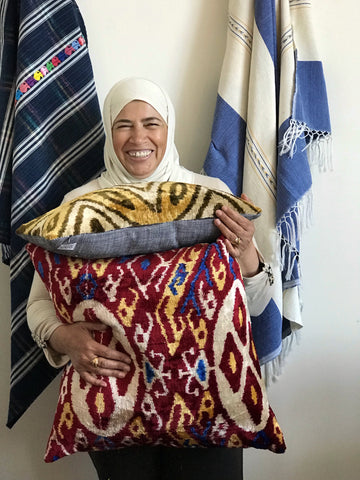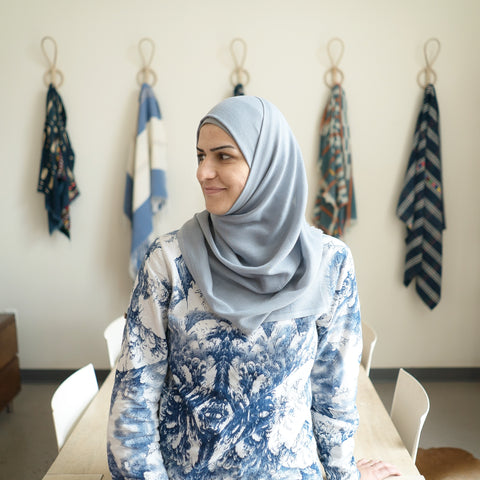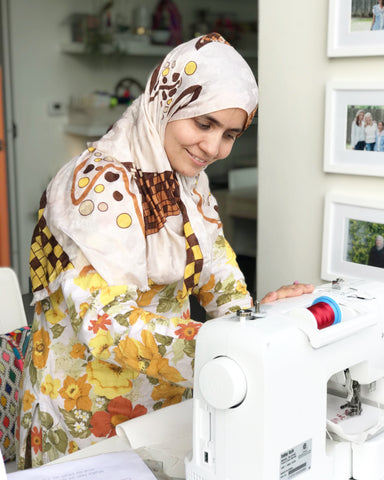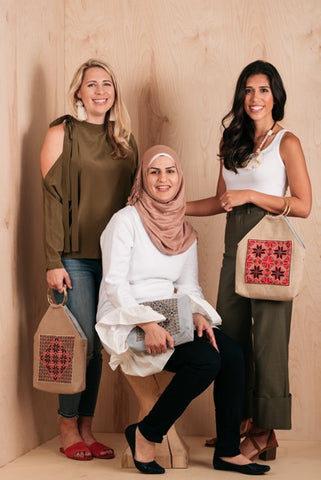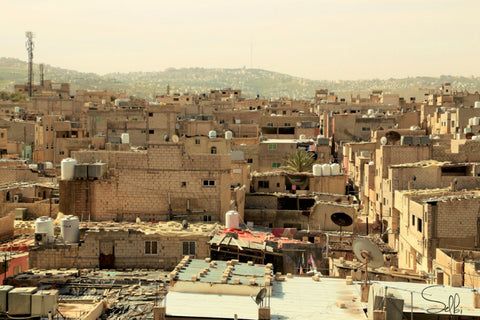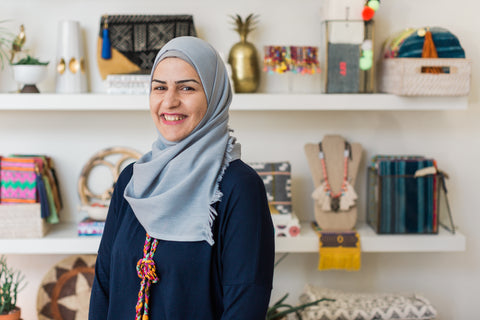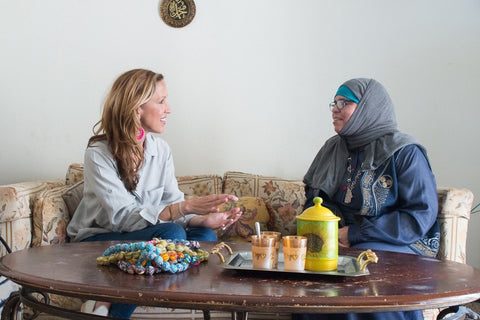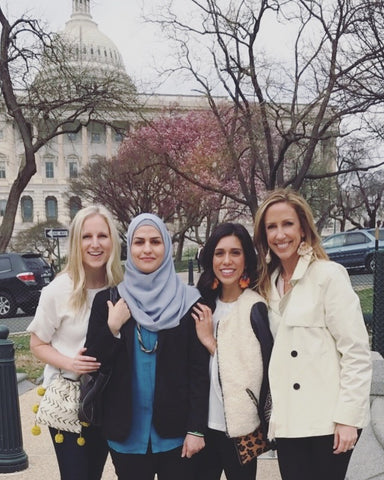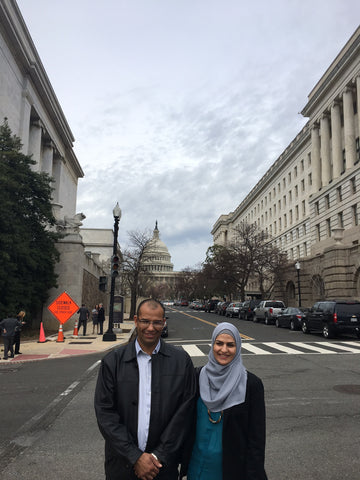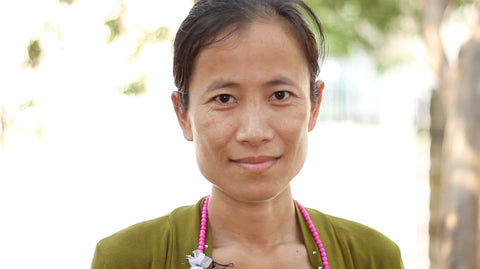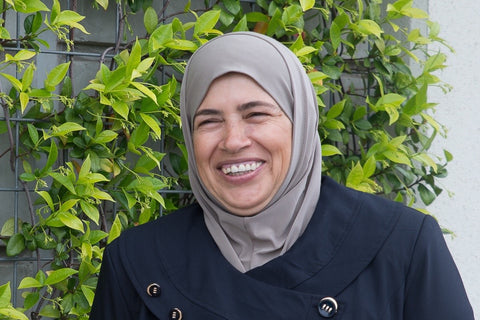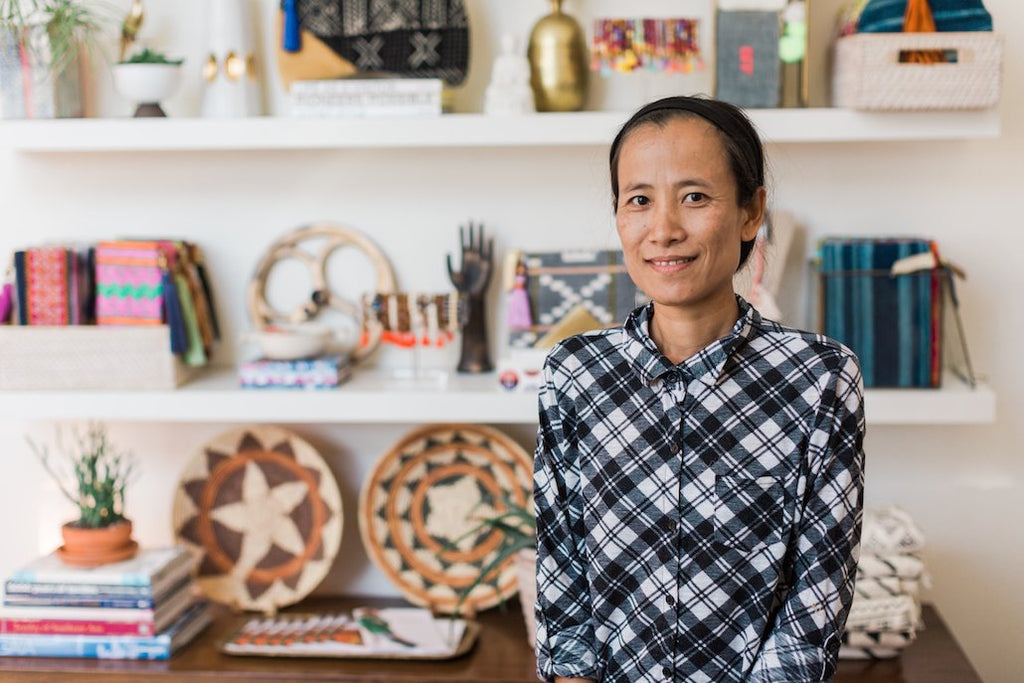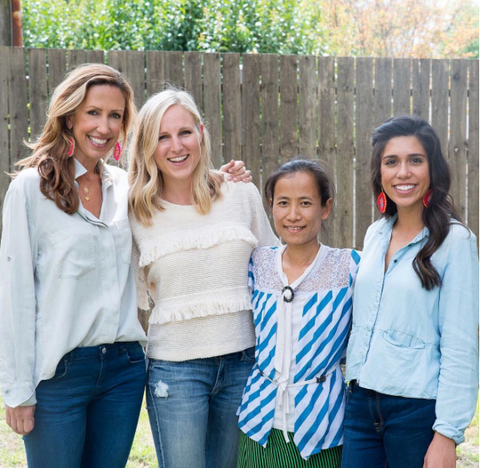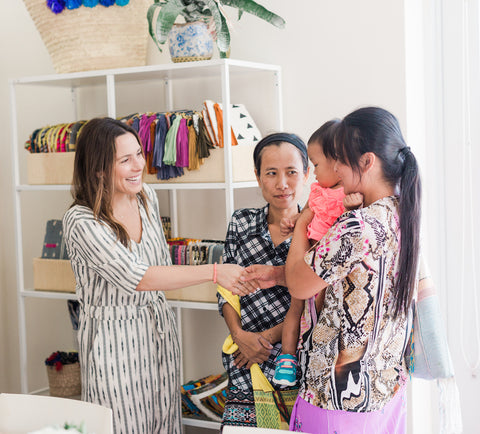
Mother’s Day is right around the corner, and at GAIA we have lots of mammas. Most of the refugee women who make our purses, pouches, and other accessories are also raising littles.
Though they come from all over the world, they share an extraordinary resilience, strength, bravery, and commitment to making a better life for their children. They also share a universal perspective: Regardless of a woman's cultural background, language spoken, country of origin, or religious beliefs, being a mother is a universal experience that transcends boundaries.
We believe that moms make the world go 'round, and we know that the challenges all mothers face can be multiplied when a mom is displaced from her home and finding her footing in a new country. We also believe that sharing the joys and difficulties of mothering with one another is helpful, so we asked our refugee artisans and apprentices to tell us a bit about their experiences since coming to the United States.
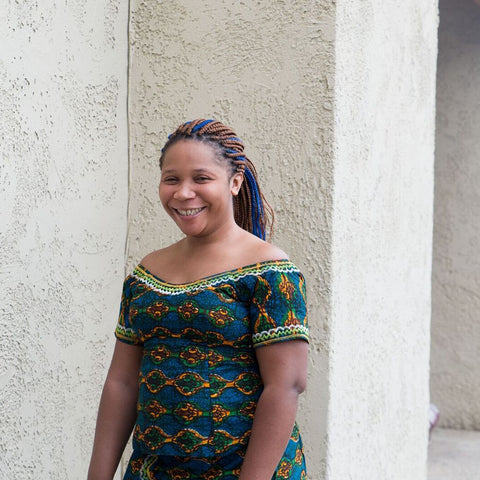
Feza, Congolese Refugee and Mother of Three
Being a mother in the refugee camp was difficult because we didn’t have money to buy our kids what they needed, and they were bored all the time. Here in America, if they need something, I am able to buy it for them with my earnings. In fact, I just bought a house with a yard! Plus, my kids are much happier now because they have more to do and can go to school.
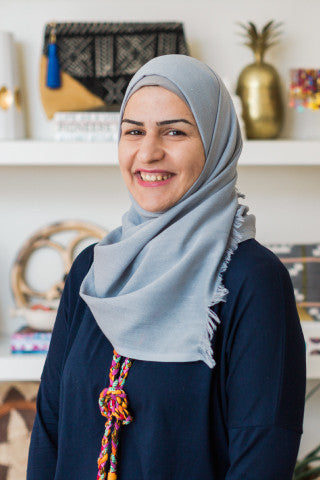
Bothina, Syrian Refugee and Mother of Two
My job as a mother changed when the crisis in Syria began. I had to protect them and keep them safe both physically and psychologically. I had to be there for them, to be strong in spite of our circumstances. I am so happy that they are now getting to grow up in the U.S. We’ve been here a year, and it’s been incredible to watch them evolve. Now my challenge as a mother is making sure they are integrating into American culture while also staying connected to their Syrian heritage.
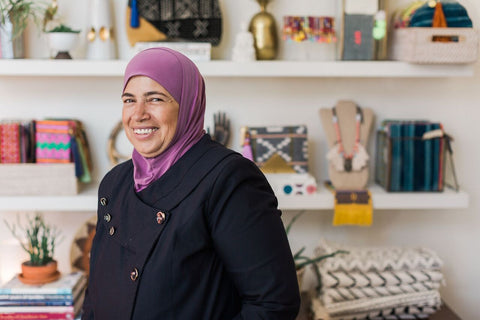
Huda, Syrian Refugee and Mother of Three
We have a very happy family. I tried to raise my three children to be loving and tolerant of others. Because of the conflict in Syria, I haven’t seen two of my children in more than four years. One of my sons is in Germany. My daughter is in Turkey with her husband and a little granddaughter, whom I have never met. I have applied for a green card and am waiting on that. It will allow me to travel to visit them. I am happy that my son, Tamam, and his family are here in the U.S. with me and my husband. I don’t know what I would do without them. (Editor’s note: Bothina is Huda’s daughter-in-law.)

Catherin, Burmese Refugee and Mother of Four
My children have many more opportunities here in the U.S. than they had in the refugee camp. In the camp, they couldn’t learn a lot, so it would have been hard for them to become what they want. But here, they can become anything if they work hard. Last fall, I became a U.S. citizen. I did that mainly so that my children — Bambina, 14; Basolus, 10; Christopher, 6; and Juliana, 2 — would be U.S. citizens and have even more opportunities. (Editor’s note: When a parent becomes a naturalized U.S. citizen, that parent’s children also become naturalized citizens, as long as the children are under the age of 18, have green cards, and live with that parent.)

Kholoud, Syrian Refugee and Mother of Six
After we fled Syria, we spent three years in Jordan. Only one of my children was able to go to school there. That was difficult, so I am happy now that all my children are in school. I love watching them learn and grow into the people they want to be. Being a mother can be overwhelming at times, of course, especially because Western culture and traditions are all new to us.
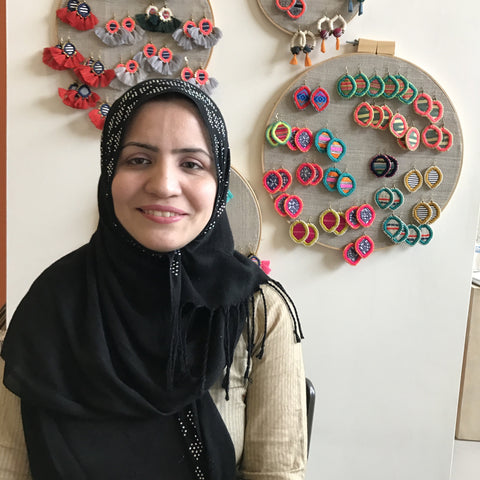
Gul, Afghan Refugee and Mother of One
I absolutely love being a mom to 2-year-old Amina. We love America, our family, learning English, and working! I am so fortunate that my own mother is here in the United States with us. She is deaf and we communicate through a sign language that we created on our own.
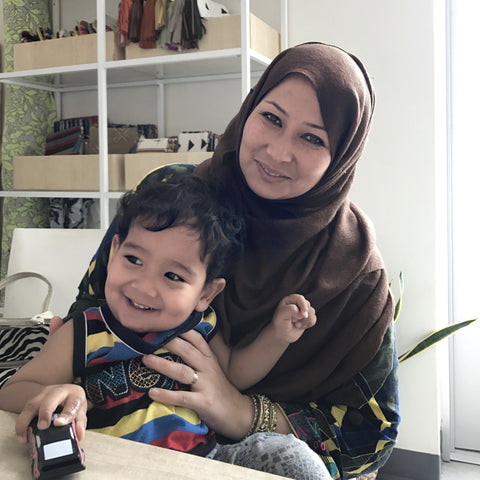
Narges, Afghan Refugee and Mother of Two
In Afghanistan, the schools are not great. The economy is not great. I am happy that I can raise my children here in the United States because I have big dreams for them! I want them to go to college and be doctors or engineers. Their opportunities for success are so much greater here!

Izdehar, Syrian Refugee and Mother of Four
My favorite thing about being a mother is the perspective that it gives me on life. Having children helps me realize what’s really important in the world, and knowing that my children depend on me helps me stay strong when things get tough.
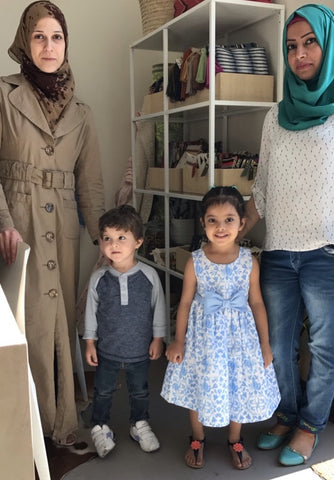
Esraa, Syrian Refugee and Mother of Four
The biggest thing for me is that motherhood has really helped me appreciate my own mother! (Editor’s note: Esraa is the mom on the left.)
Sarah, Iraqi Refugee and Mother of One
I feel like my role as a mother to Jenna, who is 3, is the most important role I will ever have. I believe that a loving and supportive mother can make the whole family strong. What's difficult for me right now is being a daughter. My mother is still in Iraq, and she is very ill. I can’t help care for her or even hug her. And I don’t know if I will ever get to do those things again. (Editor’s note: When we interviewed Sarah for this story, she could barely talk through her tears. Her heart breaks knowing that she may never see her mom again.)
We wish these mamas — and all mamas around the world — a Happy Mother’s Day!
Continue reading
